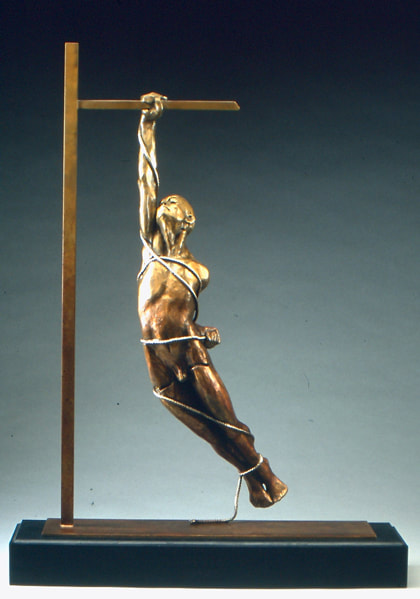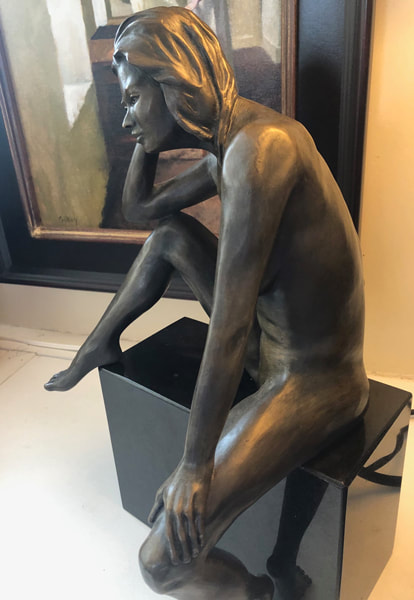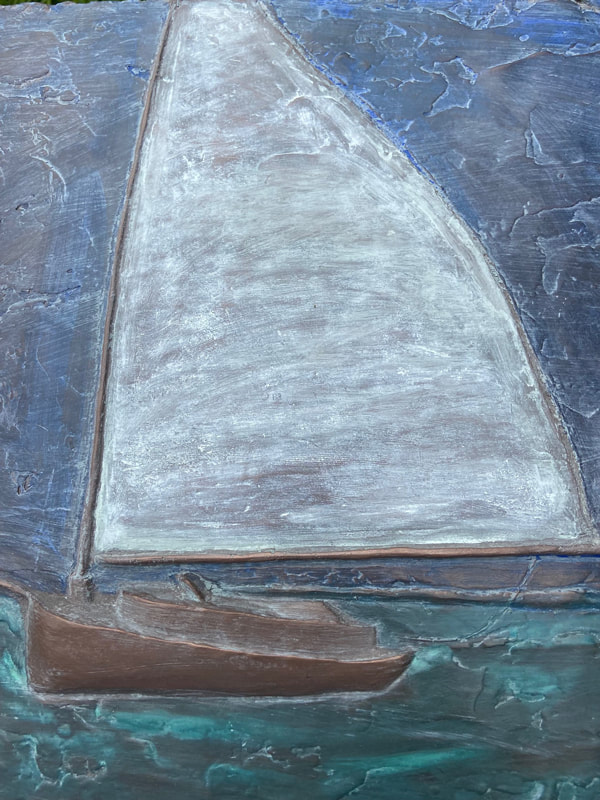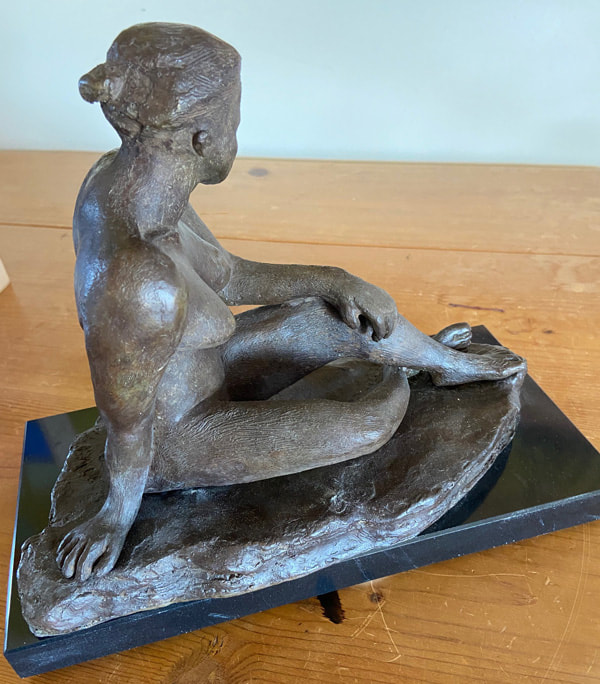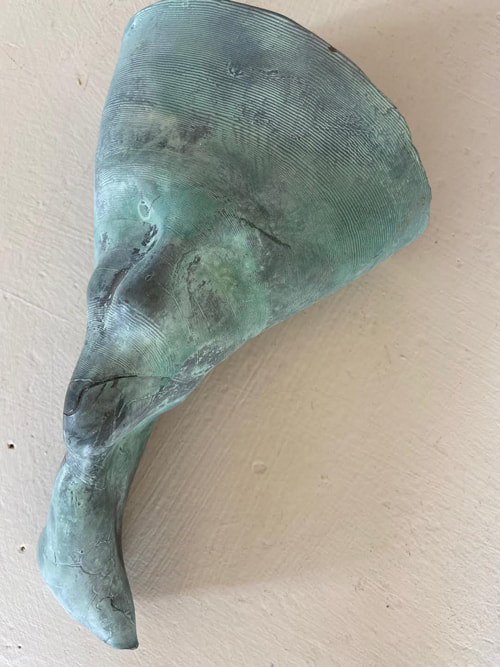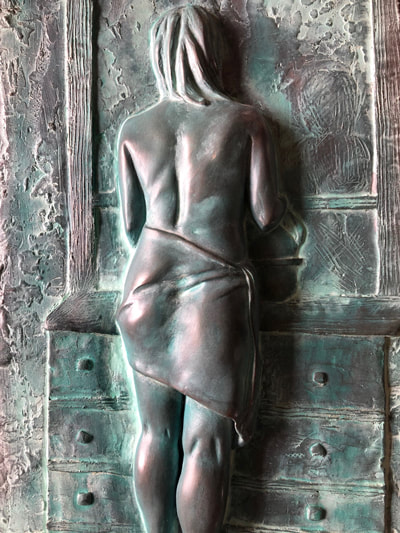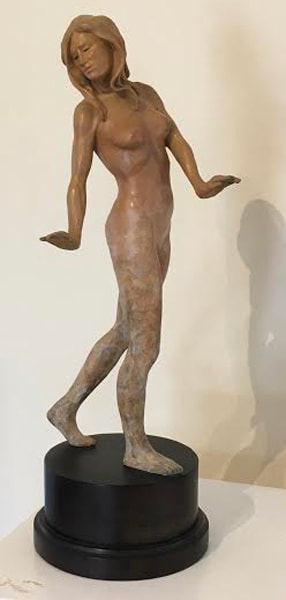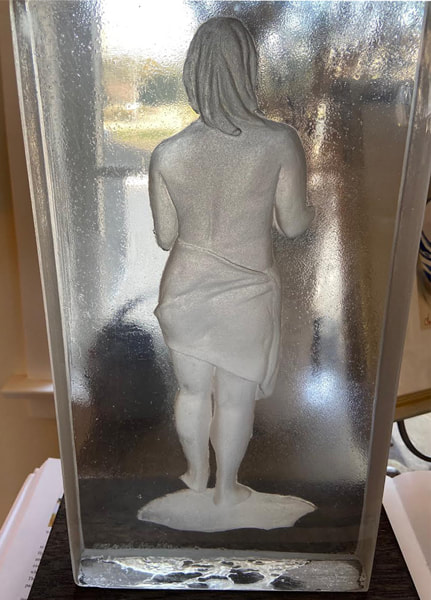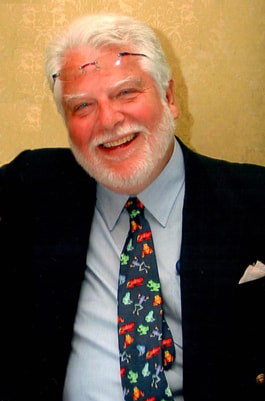Hiram Ball
Click on any image for better view of the artwork
|
Hiram Price Ball, 1946 - 2020
|
Hiram Ball came to figurative sculpting as an extension to his business career via a series of unique turns, and genetics. His grandparents had a talent for painting and could claim Charles M. Russell and his protégé, Joe deYong, as friends when they had their ranch in Idaho in the early 1900’s. In addition, his mother was a respectable painter, so the visual arts were always in the home, as well as an environment that appreciated the arts while growing up on a working farm outside of Pittsburgh, PA.
However, the entrepreneurial spirit took over after a stint in the Marines and college. “Creating a business or a creating a work of art draws on the same creative instincts,” was his position. While training sculptors and giving workshops on how to use several of the products he developed to cast their work he became intrigued with doing his own figurative sculpting and life casting. Taking workshops with some of the best figurative sculptors and extensive study of anatomy convinced him that clay, molds and bronze were his medium. Artist's Statement: To me, the human body is the most unique form in the world when you consider how it moves and conveys emotion and energy. The stories it tells, if you only look. My goal is to interpret that in clay first and then into a permanent bronze, for others to enjoy. It is a difficult quest. The fun is trying to captive it. Viewing Rodin’s "She Who Was Once the Helmet-Maker’s Beautiful Wife" and the "Gates of Hell" had a strong impact on reinforcing this decision to become a figurative sculptor. Casting Mediums All of Mr. Ball’s work is cast either in foundry cast bronze, or a cold casting medium that uses spray atomized metal powders in heavy concentrations in a water or resin based matrix. These mixes, which incorporate the metal powders, or marble dust or other fillers as an example, would when cured, behave like the respective materials. This means they would respond to chemical acid patinas and be polished using traditional metal working equipment to give a cast that looks, feels and weighs like a foundry cast piece of sculpture. Other fillers can be finished to give natural looks. This results in a much more affordable work of art. Each piece is cast by hand and individually patinaed and burnished. Consequently, no two pieces will be exactly alike. |
|
Education
Vertical Divider
|
Exhibitions, Gallery Shows and Awards
2015
|

